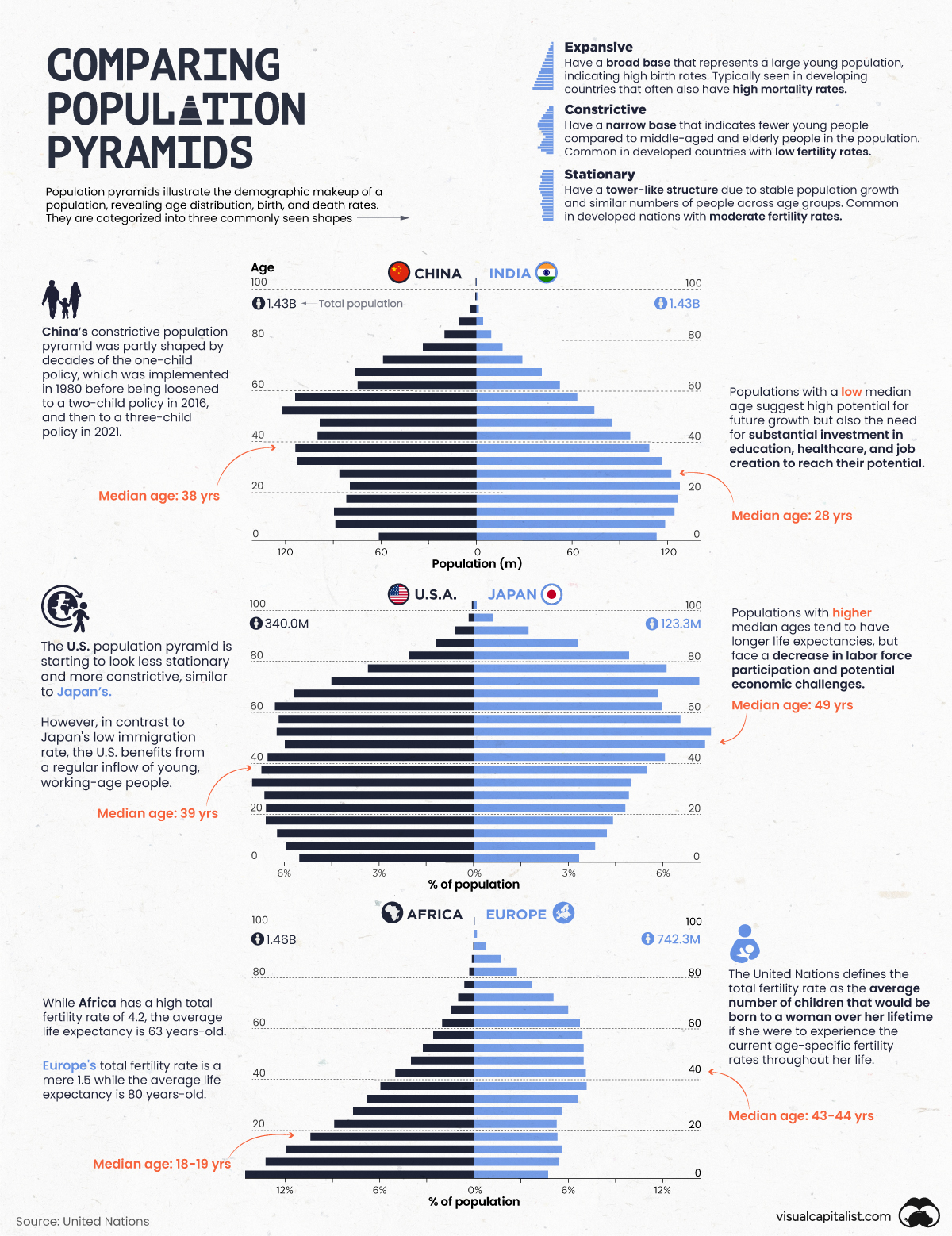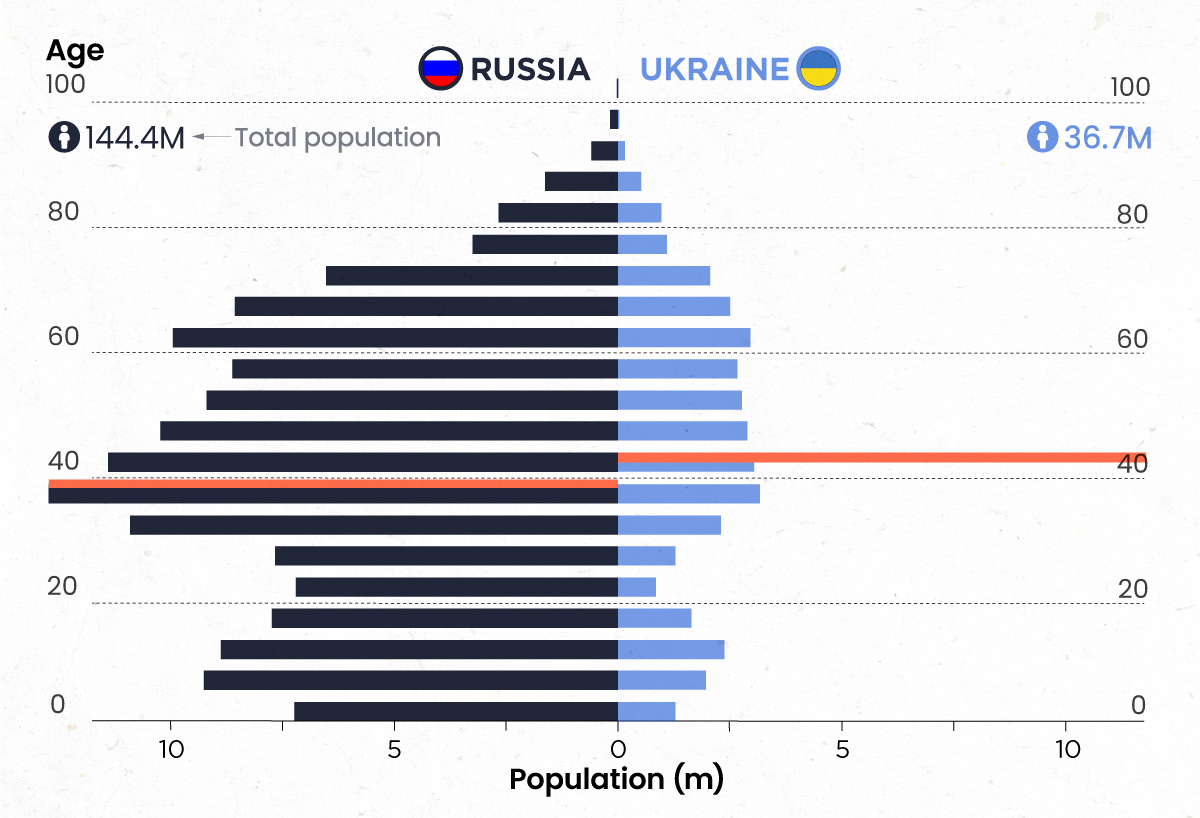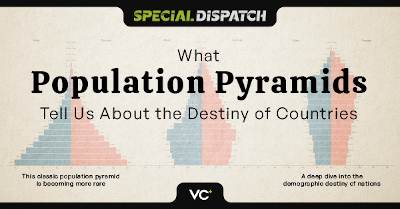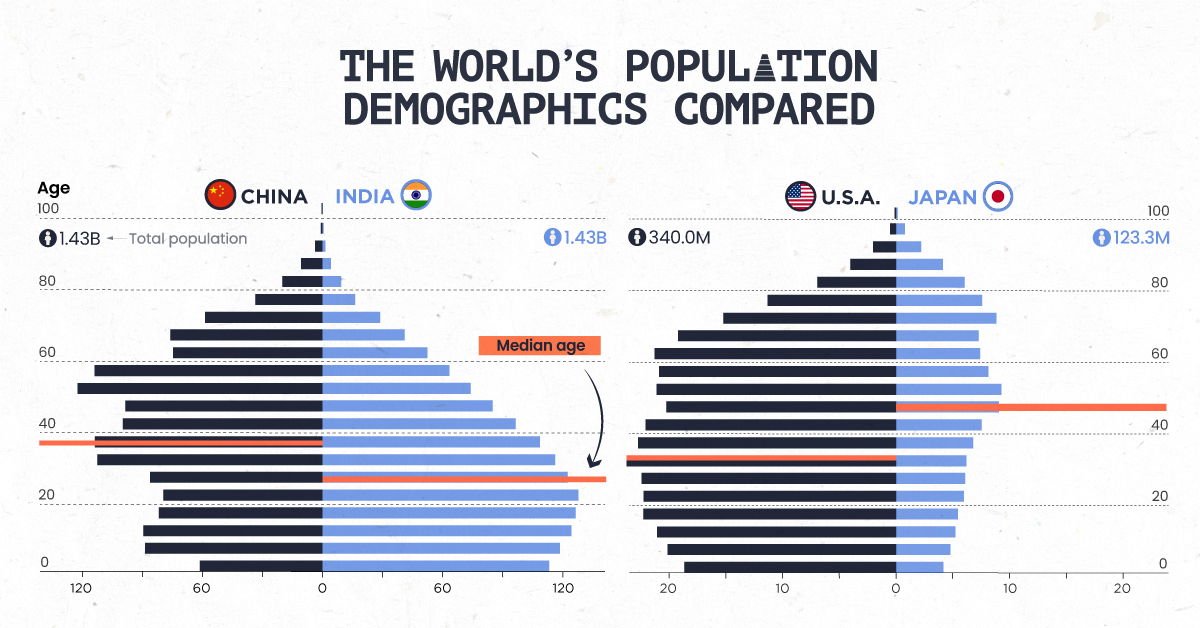Misc
Comparing Population Pyramids Around the World
Now Available, Exclusively to VC+ Members.
Dive deeper into what affects the demographics of global economies. Join VC+ to get our special dispatch!

Understanding and Comparing Population Pyramids
Demographic data can reveal all kinds of insights about a population, from the country’s fertility and mortality rates to how certain events and policies have shaped the makeup of a population.
Population pyramids are one of the best ways to visualize population data, and comparing the pyramids of various countries and regions side-by-side can reveal unexpected insights and differences between groups.
This graphic uses population data from the United Nations to compare the demographics of some select nations and regions of the world, showcasing how much age distributions can vary.
Three Types of Population Pyramids
Although population pyramids can come in all shapes and sizes, most generally fall into three distinct categories:
- Expansive Pyramids: Recognized by their traditional “pyramid-like” shape with a broad base and narrow top, expansive pyramids reflect a population with a high birth rate along with a high mortality rate which is most common in developing countries.
- Constrictive Pyramids: With a narrow base and thicker middle and top sections of the pyramid, constrictive pyramids often occur in developed economies whose populations have low birth rates and long life expectancies.
- Stationary Pyramids: These pyramids showcase an evenly distributed population across age groups, often found in newly-developed countries which have stable birth and mortality rates.
Each population pyramid is essentially a visual snapshot of a nation’s current demographic breakdown, shaped by fluctuating birth and mortality rates as well as changes to immigration and social policies.
Understanding the inherent risks associated with different pyramid types can help give insight into the challenges these populations face.
The Risks of Different Population Pyramid Types
Each type of population pyramid structure has unique challenges and advantages often characterized by the country or region’s current stage of economic development.
Populations with expansive pyramids, such as the one representing the continent of Africa, have the advantage of a larger youth and working-aged population, however this advantage can be rendered null if job growth, education, and health care aren’t prioritized.
Countries with constrictive pyramids like Japan face the challenge of supporting their outsized aging population with a diminishing working-aged population. While immigration and increasing birth rates can help in both the short and long term, due to the working population being outnumbered, countries with constrictive pyramids must find ways to increase their productivity to avoid potential declines in economic growth.
China and India’s Demographics Compared
After the world’s population reached eight billion people last year, 2023 brought a new population milestone as India overtook China as the world’s most populous country.
When you compare the two nations’ population pyramids, you can see how India’s population has a strong base of young and working-aged people compared to China’s more constrictive population pyramid that also features a higher median age.
This demographic difference is largely shaped by China’s one-child policy which since 2021 was loosened to be a three-child policy. As a result, China’s total fertility rate is around 1.2 today, in contrast to India’s total fertility rate of 2.0.
While India is set to ride the productivity boom of its large working-age population, the country will have to ensure it can keep its population pyramid stable as the majority of the population ages and total fertility rates continue to decline.
 |
Interested in learning more about the various factors that affect demographics?
VC+ Members get an exclusive look comparing the G7 and BRICS nations, how war shapes population pyramids, and immigration’s role in demographics. Unlock this in-depth briefing and hundreds of other visual insights with our newly available VC+ Archive. |
Maps
Mapped: The 10 U.S. States With the Lowest Real GDP Growth
In this graphic, we show where real GDP lagged the most across America in 2023 as high interest rates weighed on state economies.

The Top 10 U.S. States, by Lowest Real GDP Growth
This was originally posted on our Voronoi app. Download the app for free on iOS or Android and discover incredible data-driven charts from a variety of trusted sources.
While the U.S. economy defied expectations in 2023, posting 2.5% in real GDP growth, several states lagged behind.
Last year, oil-producing states led the pack in terms of real GDP growth across America, while the lowest growth was seen in states that were more sensitive to the impact of high interest rates, particularly due to slowdowns in the manufacturing and finance sectors.
This graphic shows the 10 states with the least robust real GDP growth in 2023, based on data from the Bureau of Economic Analysis.
Weakest State Economies in 2023
Below, we show the states with the slowest economic activity in inflation-adjusted terms, using chained 2017 dollars:
| Rank | State | Real GDP Growth 2023 YoY | Real GDP 2023 |
|---|---|---|---|
| 1 | Delaware | -1.2% | $74B |
| 2 | Wisconsin | +0.2% | $337B |
| 3 | New York | +0.7% | $1.8T |
| 4 | Missississippi | +0.7% | $115B |
| 5 | Georgia | +0.8% | $661B |
| 6 | Minnesota | +1.2% | $384B |
| 7 | New Hampshire | +1.2% | $91B |
| 8 | Ohio | +1.2% | $698B |
| 9 | Iowa | +1.3% | $200B |
| 10 | Illinois | +1.3% | $876B |
| U.S. | +2.5% | $22.4T |
Delaware witnessed the slowest growth in the country, with real GDP growth of -1.2% over the year as a sluggish finance and insurance sector dampened the state’s economy.
Like Delaware, the Midwestern state of Wisconsin also experienced declines across the finance and insurance sector, in addition to steep drops in the agriculture and manufacturing industries.
America’s third-biggest economy, New York, grew just 0.7% in 2023, falling far below the U.S. average. High interest rates took a toll on key sectors, with notable slowdowns in the construction and manufacturing sectors. In addition, falling home prices and a weaker job market contributed to slower economic growth.
Meanwhile, Georgia experienced the fifth-lowest real GDP growth rate. In March 2024, Rivian paused plans to build a $5 billion EV factory in Georgia, which was set to be one of the biggest economic development initiatives in the state in history.
These delays are likely to exacerbate setbacks for the state, however, both Kia and Hyundai have made significant investments in the EV industry, which could help boost Georgia’s manufacturing sector looking ahead.
-

 Technology1 week ago
Technology1 week agoCountries With the Highest Rates of Crypto Ownership
-

 Mining6 days ago
Mining6 days agoVisualizing Copper Production by Country in 2023
-

 Politics7 days ago
Politics7 days agoCharted: How Americans Feel About Federal Government Agencies
-

 Healthcare1 week ago
Healthcare1 week agoWhich Countries Have the Highest Infant Mortality Rates?
-

 Demographics1 week ago
Demographics1 week agoMapped: U.S. Immigrants by Region
-

 Economy1 week ago
Economy1 week agoMapped: Southeast Asia’s GDP Per Capita, by Country
-

 Automotive1 week ago
Automotive1 week agoHow People Get Around in America, Europe, and Asia
-

 Personal Finance1 week ago
Personal Finance1 week agoVisualizing the Tax Burden of Every U.S. State
















